In Solar Power Lies Path to Reducing Water Use For Energy
Concern, though, that desert solar power plants could compromise desert habitat.
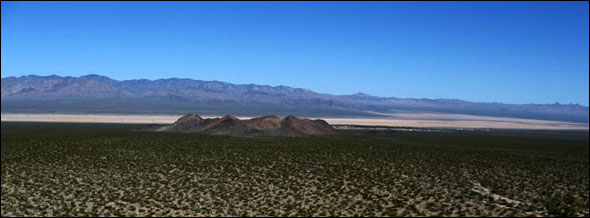
By Nicholas L. Cain
Circle of Blue
California’s Mojave Desert, which drivers cross on Interstate 15 between Los Angeles and Las Vegas, encompasses 20 million acres of land and three national parks, hosts 2,500 species of plants and animals, is shadowed by mountain ridges that rise to nearly 12,000 feet, and has the largest collection of solar thermal power plants in the world.
Between 1984 and 1991, Luz International Ltd., a Los Angeles—based engineering company, developed and built nine solar electricity generating stations in the Mojave that produce a total of 354 megawatts, about the same amount as a small coal-fired utility.
Six years ago Arnold Goldman, the founder of Luz, formed BrightSource Energy, moved the company to Oakland, and got busy modernizing the design and preparing for the biggest dash for cash ever seen in the solar thermal industry.
Developers have presented the federal Bureau of Land Management (BLM), which oversees almost all of the Mojave, with 75 applications to build solar facilities in the desert that could affect 647,000 acres, according to Here Comes The Sun, a March 2009 study by Oregon State University graduate students. The California Energy Commission is close to final decisions on the first five solar thermal plants—including one proposed by BrightSource—that together would span 22,000 acres, generate 2,470 megawatts and cost roughly $15 billion.
The BLM is reviewing 33 other solar power plant applications in Arizona that cover 452,000 acres of federal land in the Sonoran Desert, mostly in the south and southwest sections of the state, according to a 21-page report released in July by Senator John Kyl (R-Ariz.). Of those proposed plants, 29 would use some form of solar thermal technology. Ten more applications for solar plants are under review by state environmental authorities in Arizona.
Southern Nevada is the focus of 63 utility-scale solar plants, according to the BLM.
Solar’s Water Risks, Alternatives
Tens of billions of dollars are on the table for steam generator builders like Siemens and General Electric Co., for contractors like Bechtel Corp., and thousands of skilled workers anxious to earn paychecks building big showcases of what’s possible in the emerging clean energy economy. But also in play is the credibility of the Obama administration, which is issuing billion-dollar loan guarantees and fast tracking projects on federal land, as well as whether utility-scale solar plants can significantly reduce environmental risks and still provide southern California home and business owners competitively-priced electricity.
On that last point there is some dispute. In the competition between energy and water, none of the market-ready energy alternatives are free of environmental risks, and only a handful eliminate concerns about water withdrawals from lakes, rivers and aquifers, as well as water consumption from evaporation.
Solar photovoltaic power, which generates energy directly from sunlight, uses virtually no water. Six utility-scale solar PV plants were put online last year in the United States, according to the Solar Energy Industries Association (SEIA), a trade group.
The U.S. wind energy industry, which generated 35,000 megawatts last year, and has been growing by more than 35 percent annually over the last five years, uses no water. The American Wind Energy Association (AWEA), a trade group, said in its annual report that wind generators prevented emissions of 62 million tons of carbon last year, and saved 20 billion gallons of water.
Also coming online is energy generated from wave power that does not use fresh water. The country’s first utility-scale wave power project is the 1.5-megawatt wave energy park located 2.5 miles off the Oregon coast near Reedsport. It uses PowerBuoys, manufactured in Oregon, that move up and down with wave motion, causing an internal piston-like structure to drive an electrical generator.
Solar thermal designs that focus sunlight on water to generate steam to power turbines eliminate climate-changing emissions. They also eliminate the need to produce coal, natural gas and uranium, all of which are significant sources of land damage, as well as air and water pollution.
But utility scale plants cover thousands of acres. The Center for Biological Diversity and the local chapter of the Sierra Club assert that the big solar plants, photovoltaic or concentrated solar power (CSP), will damage sensitive plants and put more pressure on the endangered desert tortoise.
More significantly, researchers at several federal agencies and in Congress have expressed concern about supplies of water that the concentrated solar plants use for cooling, water that is already scarce in the desert regions of California, the Southwest and the Rocky Mountain states. Solar thermal plants that use conventional cooling technology withdraw 98 percent less water from aquifers and rivers than coal and nuclear plants, and 90 percent less than natural gas-fired power plants, according to the Department of Energy. But they consume through evaporation from cooling three times as much water as a coal-fired power plant. A conventionally cooled solar thermal plant uses 740 to 890 gallons to generate one megawatt hour of electricity. A conventionally cooled coal plants uses 200 to 300 gallons, according to the Energy Department.
In May, Sen. Kyl issued a report on water supplies and solar thermal plants that further clarified these concerns. The Energy Department’s National Renewable Energy Laboratory, said the report, estimated that by 2050 CSP plants could produce 53 gigawatts of electricity—enough to power tens of millions of homes in states like Arizona, California, New Mexico, Nevada and Texas. The nonpartisan Congressional Research Service estimated that the total water use for these projects, using conventional cooling methods, would be 164 billion gallons of water a year. That’s roughly the same amount of water that the entire U.S. coal-fired utility industry consumes in 50 days.
Arizona, California Set Solar Pace
In Arizona, the CSP plants would consume about a third — an estimated 53 billion gallons of water a year — “representing the largest percentage of any state’s water requirement to produce solar power,” according to the Kyl report. National Park Service Director Jon Jarvis warned the BLM in a formal memorandum last year that federal approval of dozens of solar plants in southern Nevada could affect water supplies across the region.
“Arizona lawmakers have an obligation to protect the state’s limited water supply and put its water resources to their highest and best use,” said the authors of the Kyl report.” Using Arizona’s water supplies to produce conventional CSP that will most likely be exported out of state does neither.”
“Despite the seriousness of water constraints,” the report added, “solar power companies have largely ignored water concerns and continue to propose water-intensive conventional CSP plants in Arizona.”
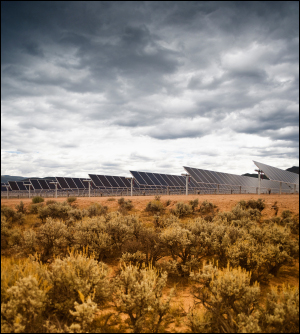
In California, the state energy commission has responded to such concerns by requiring water-conserving air-cooled systems. BrightSource’s proposed 370-megawatt Ivanpah Solar Electrical Generating System plant will use 100 acre-feet or 32.5 million gallons of water a year, or about what a similar-size coal-fired plant consumes in a few days.
“One hundred acre feet of water is not a lot of water, but given the arid location, project developers and regulators must ensure there are no irreversible local impacts,” said Peter H. Gleick, president of the Pacific Institute, one of the nation’s foremost water research organizations and Circle of Blue’s parent.
Indeed, say authorities, when compared to conventional coal and nuclear powered thermal plants, the BrightSource solar generating station by itself is a water miser. The same is true for the $6 billion, 1,000-megawatt Blythe Solar Power Project in Riverside County that is nearing final federal and state approval. It will use 196 million gallons of water a year. The nearly same size 995-megawatt Cholla Power Plant in northeastern Arizona near Holbrook, withdraws and uses nearly 43 million gallons of water a day.
California, according to the Energy Information Administration, is home to 1,102 megawatts of utility-scale solar generating capacity, which is most of the solar generating capacity in the U.S. The next highest state is New Jersey, with 128 megawatts of solar generating capacity. Last year, according to the Energy Department, 25 new solar thermal and photovoltaic plants came on line or began construction, and will add 145 megawatts of generating capacity. This year, 13 more solar plants are scheduled to come online or begin construction, and add 468 megawatts of capacity.
When compared to development in the fossil fuel sector, solar’s additional capacity is tiny. In 2009 and 2010, utilities added 25 new coal-fired plants that have a generating capacity of 11,000 megawatts, said the Energy Department. And 186 natural gas-fired plants were under development during the same period that generate over 21,000 megawatts.
The sun, in other words, accounts for well under one percent of all electricity in a country that has over 1 million megawatts of electrical generating capacity, according to the Energy Department.
California authorities are anxious to change that. On August 25, the California Energy Commission approved the construction of the proposed 250-megawatt Beacon Solar Energy Project, the first solar thermal power project permitted in 20 years. The last solar thermal power plants that the Energy Commission approved were Luz Solar Electric Generating Systems (SEGS) IX and Luz SEGS X in February 1990.
Earlier, on Aug. 3 a three-member panel of the California Energy Commission recommended that the full five-member board grant BrightSource a construction permit for the Ivanpah plant. The BLM must also approve construction. But that decision is expected to be a formality. The BLM earlier this month released a favorable environmental impact statement, and in February, the Obama administration awarded BrightSource a $1.37 billion loan guarantee to build the $3 billion plant.
The BrightSource design could set a new industry standard for electrical generation and water conservation. It uses a “power tower” surrounded by curved mirrors to focus solar energy on a boiler. In filings with the state, BrightSource said it will obtain the water needed by the facility from on-site wells. Water will be filtered before being used to rinse mirrors or added to the generation process. Runoff from mirror-washing will be used to irrigate landscaping.
“One of the significant advantages of power tower technology,” according to Keely Wachs, the company’s senior director of communications, “is the ability to produce superheated steam, which reduces the efficiency impact to the overall plant when dry cooling.”
Weighing the Environmental Costs, Benefits
Ileene Anderson, a biologist and public lands director for the Center for Biological Diversity (CBD), a wildlife conservation group, still worries about “overdrawing groundwater aquifers in the Mojave” and nearby regions and that the Ivanpah project is “in the wrong location.”
“Springs in the Clark Mountains are just south and west of the project site,” Anderson said. “We’re very much in favor of solar energy and getting off fossil fuels, but the projects must be sited appropriately.”
BrightSource, in response, noted that it selects sites that are “near roads and existing transmission lines.” The Ivanpah project is within five miles of an existing natural gas power plant and is “bisected by a transmission corridor containing three power lines,” said the company in an email message.
The Natural Resources Defense Council (NRDC), in a January 2009 letter to the energy commission, noted that other area users of groundwater, including a neighboring golf course, had suffered from brackish water intrusion to their wells. Brackish water often contains salt or other minerals and is thus not usable for irrigation.
As to concerns raised by the NRDC that an increase of groundwater pumping could harm the Primm Valley golf course, Gleick noted that, “If I had a choice of where to ‘spend’ my water in the desert, and we do, as a state, I’d far rather see it go to producing solar energy than lush golf greens.”
Indeed, in the competition between energy and water, other states are also grappling with the solar tradeoffs. Solar Millennium AG, a developer of utility scale solar projects, recently decided to change the design of a large solar thermal project it planned for Nevada from wet to dry cooling.
Environmentalists are mixed about whether the affects of solar-thermal outweigh the benefits.
“Sierra Club supports the most efficient power generation technology, but we look at individual projects on a case-by-case basis,” noted spokesman David Graham-Caso. “We’re looking for anything that can help utilities move off coal.”
Anderson of the Center For Biological Diversity notes that although the scale and potential affects of planned solar-thermal projects are a concern, in the “appropriate places” the projects should go forward because “species will be affected by climate change as well, even in the Mojave area. “
Nicholas L. Cain is an environmental researcher who is studying for a PhD in political science at Claremont Graduate University. He is a former employee of the Pacific Institute. Read more of our Choke Point: U.S. coverage on Circle of Blue.
Circle of Blue provides relevant, reliable, and actionable on-the-ground information about the world’s resource crises.

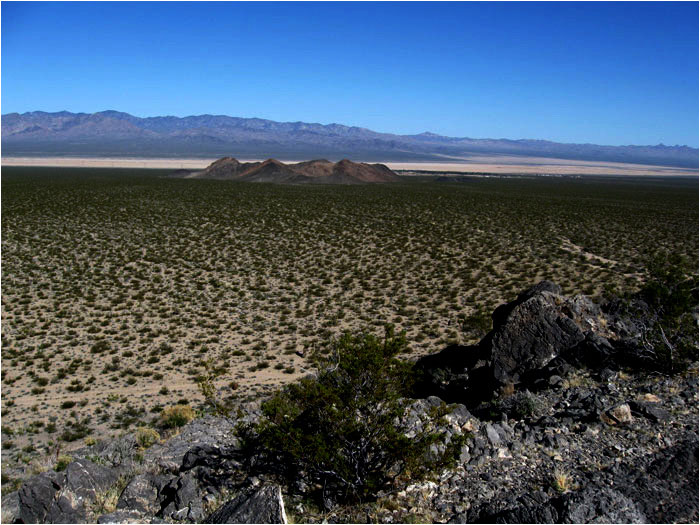
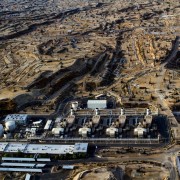


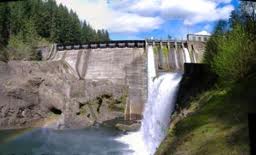


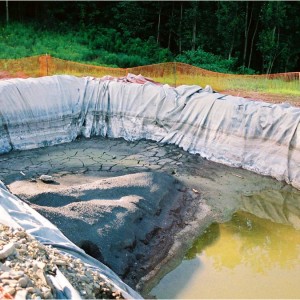
The problem with solar and other “renewables” is that they still are but a small part of the overall energy picture. With nuclear basically banned, for now, in America, the future lies with natural gas — which is plentiful in America, and relatively cheap. Solar, thermal, etc. are sideshows.
This article is premised on a competition between water and energy. In truth thermal solar can be a win-win. Thermal Solar is among the highest and best uses of water. Solar projects can justify water recycling projects which are otherwise unaffordable. By providing water to solar projects the solar project can avoid air cooling which often makes the solar project unaffordable. Proper planning can yield economically attractive solar projects and enhance water supplies through cooperative and creative development.
I think its a good idea to go ahead with the building of the power plants. Their source will always be available for generation. That’s what makes them so cool.
I would love to see most dams taken out during the next century how great would that be? I mean solar panels are so much better when you take out a dam it restores a river to what it used to be and it doesnt destroy the earth.
Solar power plants are just starting to produce clean and relatively cheap energy. In Ontario, CA were installed more than 350 solar electric power plants in 2007 that can produce 550 megawatt with rate $0.713/kWh. Definitely we should keep continuing in this process. The task will be to find cheap, safe and quick distribution paths to deliver this kind of energy to households.
That’s great! I think it will be big help then. Do the right track!
Judging from many of the comments made here, it is obvious that many do not understand how the electrical grid works.
http://www.greentechmedia.com/articles/read/cost-of-big-pv-to-the-grid-3-to-8-per-megawatt-hour/
Hopefully the above link will help explain that:
“There’s a real minute-to-minute cost to the grid when it comes to handling lots of solar power on partly cloudy days. Out in the Nevada desert, it adds up to about $3 to $8 per megawatt-hour.
Those are the numbers churned out of a Department of Energy-backed project with Las Vegas-area utility NV Energy and Navigant Consulting, based on a computer model simulating 10 different scenarios for solar PV systems at both rooftop and utility scales. Turns out that 150 to 1,000 megawatts of intermittent PV penetration requires a lot of fossil fuel-fired backup generators to help smooth it out on cloudy days — and that costs utilities money.”
As a proponent of roof-top solar, I hope that others would take the time to better understand the dynamics of power distribution on our electrical grid. Commercial solar power cannot exist without volt-amps-reactive supplied to the grid by large generators, like combined cycle, coal, nuclear and hydro. I wish this was not the case, but it is.
Of interest to solar supporters is the current economic conditions for that industry in Germany.
http://www.forbes.com/sites/williampentland/2013/07/08/germanys-solar-industry-is-imploding/
Even with German power users paying 33 cents/kWH (3-5 times Continental US rates), German solar power companies cannot sustain their corporate growth.
http://www.bloomberg.com/news/2012-03-21/grid.html
I recently have noticed how tidal and wave power devices and schemes are showing up in electrical industry trade publications with increased regularity. Have we given up on solar and wind already?
Well, we’ve seen a lot of solar and wind installation over the past few years…and now the bad news:
http://www.reviewjournal.com/news/14-eagles-1-million-wind-farms-pay-steep-price-bird-deaths
Wind power is being fined for playing a part in turbine related bird deaths, per the Migratory Bird Treaty Act. The fines are substantial.
http://motherboard.vice.com/blog/solar-plants-are-burning-birds-wings
Solar power may be facing the same problem, as birds get scorched by reflected sun rays or mistakenly believe solar panels are water, and attempt to land.
The bad news for wind power may be good news for solar. You may have seen this piece about Scottish Power’s cancellation of a giant UK wind farm.
http://news.yahoo.com/scottish-power-becomes-third-firm-scrap-uk-offshore-140344351–finance.html
It seems to be a growing trend as environmental concerns, economics, and technical challenges bring wind power to a standstill before it even gets started (in most cases). Where was the paradigm shift, since inception to execution? Why are there no articles listing the obstacles faced by wind power, detailing the various aborted wind projects, the current capacity factors of US wind power plants (the needed information is found in the current IEA reports).
When the average person in the US believes that alternative energy can provide the majority of our nation’s power demand, because that’s what the media is putting out there, and shutdowns are showing otherwise, it’s time for proper reporting of the issues faced by alternative energy.
From what I have been able to glean about Solar is the large amount of water that it needs to cool. That seems to be a problem in the desert areas where populations are booming and the area is starved for water.
Add to that the idea that the real green folks (and I am a conservationist, but not totally green), also like the birds (which I like as well) that are killed by the wind turbines or scalded by the reflected light from solar. So, even though we haven’t spilled oil on the Alaska Coast we are still damaging wild life.
We have people that keep flocking to the desert, bringing their “City” ways with them. They want a yard and a clean car as well as water to drink. And there is little water and a drought.
I guess there are costs to energy no matter where we get it. But, based on the numbers of Solar companies that are struggling or going down, I don’t think the current technology works.
But that’s just my humble thoughts…